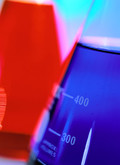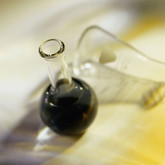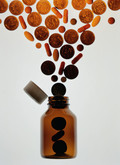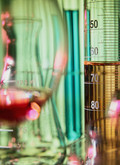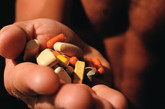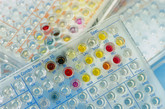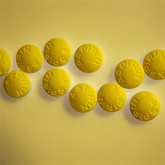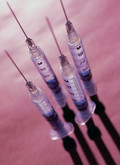Biosimilars/Research
US biosimilars law may prove a barrier to entry for biosimilars
One of the main barriers to biosimilar entry in the US is the US biosimilars law [1]. While some have questioned whether the biosimilars pathway in the US will ever be used [2, 3], others believe that, although flawed, the US biosimilars pathway is likely to become a functioning legal pathway [4].
Brand-name statins costing healthcare system US$6.7 billion
Researchers at Mount Sinai School of Medicine, New York, USA, found that physicians prescribing unnecessary treatments or diagnostic tests, spanning a broad range of clinical conditions, costs the US healthcare system an extra US$6.7 billion annually. The findings, published in Archives of Internal Medicine, attributed prescribing of brand-name statins instead of generic statins as accounting for most of the excess cost [1].
Biotech pipeline and biosimilars
There are more than 200 new biotechnology products in the pipeline (phase II to registered), all of which could be future targets for biosimilars. However, around 60% of these products concern mechanisms of action that are already available, see Figure 1 [1].
Biosimilars or biobetters–what does the future hold
Biosuperiors or biobetters are improvements to originator biological molecules, whereas biosimilars are structural imitations of the originator. But how will the pharma industry choose to pursue this lucrative market and benefit from patent expirations on biologicals? Will biobetters or biosimilars be the winners?
How profitable will biosimilars be
The profitability of biosimilars remains an open question. Five years after launch it is thought that most biosimilars markets will look similar to generics markets (70% penetration, 25% of brand-name drug price) but also that a ‘brand-like’ market with lower price attrition and market share is possible [1].
US$54 billion worth of biosimilar patents expiring before 2020
By 2020 biological products with sales of around US$23 billion in the EU and US$29 billion in the US are expected to be exposed to biosimilar competition [1].
Biosimilars: barriers to entry and profitability in the EU and US
The implications of the US biosimilars law and the pending patent expiries of the 12 major biological products in the EU and the US will have an impact on the profitability and viability of the biosimilars industry [1].
EMA biosimilar regulation should include complex biologicals
The EMA’s comprehensive biosimilar regulatory pathway, which includes the need for new clinical trials and comparability studies that demonstrate quality, efficacy, and safety, should be expanded to include complex biologicals, according to innovation researchers at Utrecht University, Utrecht, The Netherlands [1].
The biosimilars landscape
There is obviously a market for biosimilars. This is driven by the cost savings to be made by payers and patients alike. By 2015, IMS Health (IMS) expects spending on biosimilars to exceed US$2 billion annually, or about 1% of total global spending on biologicals. They expect new biosimilars to enter the US market by 2014 and European markets to have additional biosimilar molecules introduced during this period [1].
EMA comparability studies limiting biosimilar success
The EMA’s comprehensive biosimilar regulatory pathway, which includes the need for new clinical trials and comparability studies that demonstrate quality, efficacy, and safety, is a barrier for the development of clinically superior compounds, according to innovation researchers at Utrecht University, Utrecht, The Netherlands [1].
